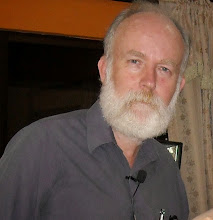July 4, 2009
Before Katrina's devastation, New Orleans had about 450,000 residents. Then came Katrina. For a time, the city was close to empty.
The number of newly unemployment people in June was larger than the size of New Orleans in 2005.
Think about this. Month after month, we lose the productivity of the equivalent of New Orleans. Or Sacramento. Or Fresno. These are huge losses.
These people no longer contribute to the economy. Yes, they still spend money, but they are drawing down on savings. They must sell what they own to put food on the table. Or they get unemployment insurance payments from the state. Same problem. They are consuming without producing. This reduces everyone's wealth a little. People's productivity is what makes life possible.
When the news release hit, the stock market fell and never recovered for the day. Why? We know that most forecasters have predicted 10% unemployment this year. Unemployment rose by 450,000, yet the unemployment rate rose by only a tenth of a percentage point: 9.4% to 9.5%. What will it take to push unemployment to 10%?
As I figure it, that will take another two million unemployed, or close to it. That means four or five Sacramentos or Fresnos.
The forecasters say they think stocks will rise. Until when? How many Fresnos must be fired for the stock market to peak? What is the benefit to the market of firing New Orleans? These people must find work or else lose their homes. They must find work or be forced into bankruptcy.
I hate to think about the effect on a family when a breadwinner gets fired. The still-working spouse -- if any -- now has the burden of paying the bills. But most families have little slack in the monthly budget. Where will the money come from to pay 100% of the bills on 50% of the income?
We are seeing 450,000 catastrophes a month. We know it's happening, but we shrug it off. Investors shrug it off. "No problem!" But it is a problem.
Fear is spreading fast, which is why the savings rate is up. The old dream of passive returns on investment making retirement possible is just about gone. This will change the plans of far more people that the 450,000 a month who get fired.
Think of another city shutting down next month. And the next. And the next. This is a better way to think of what's happening than just a tenth of a percentage point increase in the unemployment rate.
This is why you need more than a single income source.
Use this as motivation to begin planning a way to get another income source. I am, and I have lots of income sources, subscriber by subscriber. [I wrote this before yesterday's computer glitch.]

